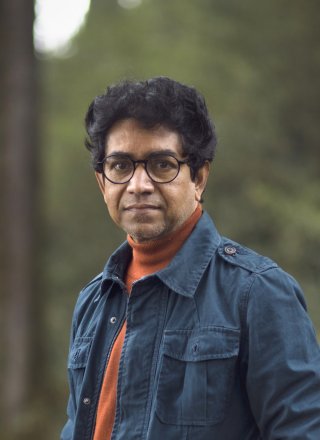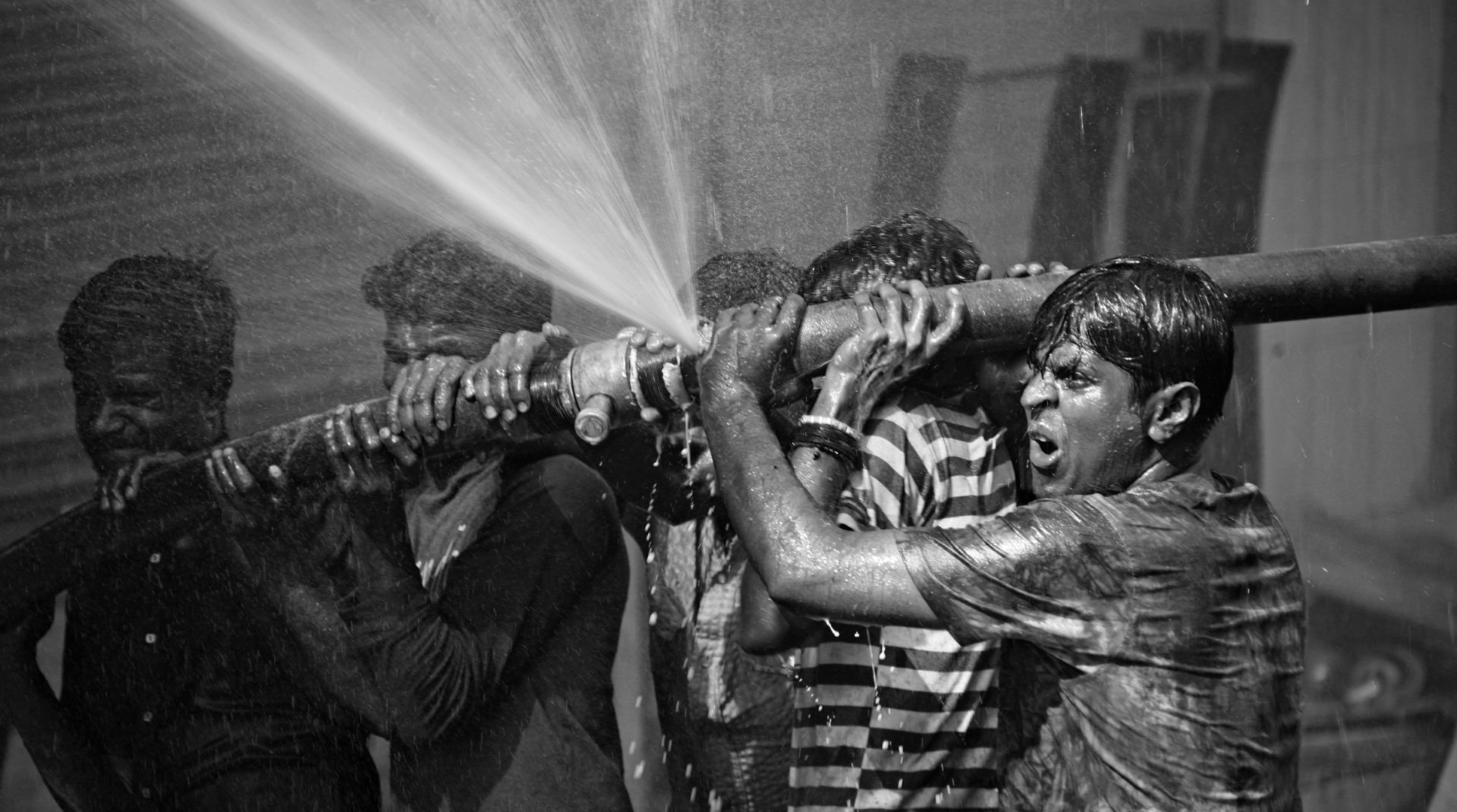
Death Trap
Abir Abdullah
EPA
Both arson and accidental fires are a permanent death threat for the working-class communities of Dhaka, whether in a basti (slum), a garment factory or shopping mall. Corrupt officials do not enforce building codes, and greedy businessmen bypass fire protection requirements, turning homes and work spaces into death traps.
Fire is a threat for everyone in the city of Dhaka, from homes and workplaces to shopping malls and public spaces. With no proper building codes and inadequate fire protection, residents are living in a death trap.
The fire service authority is under-trained and under-equipped, while fire destroys property, homes and lives. The problem is widespread and nearly everyone is affected by deaths caused by fire, whether working class, middle class or even the elite.
The most flagrant examples can be seen in the garment industry in Bangladesh, which is also the country’s most successful business sector, with exports last year bringing in $19 billion. Factory fires have killed 600 garment workers since 2005.
Palash Mian was inside the factory and called her mother on the phone: “Ma, I have no way of saving my life. I can’t find any way out. I am in the bathroom on the fifth floor. I am wearing a black T-shirt. And I have a shirt wrapped around my waist. You will find me in the bathroom.” Dead bodies in white bags were lined up in a schoolyard near the factory. Palash’s mother, Ms. Begum, unzipped a bag and found a corpse wearing a black T-shirt.
Preview
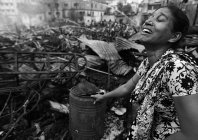
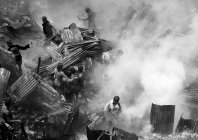

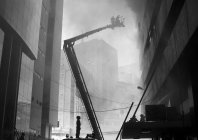
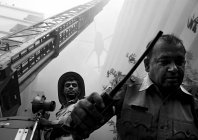
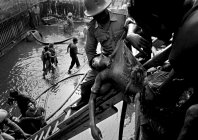
The horrific fire at Tazreen Fashion Factory hit headlines around the world in November 2012. The official death toll was 117 (although activists claim that the authorities had other bodies "disappear"), making it the deadliest factory fire in the nation's history. Fifty-three workers were so severely burned that the bodies could not be identified and were then buried in a mass grave. Tazreen's clients, either direct customers or via subcontractors, included global giants Walmart, US Marines, Sears, Disney, and Enyce. As a result, the fire came to symbolize the high cost paid by third world workers to satisfy the fashion whims and desires of western consumers. The issue was taken all the way to US President Barack Obama, in a letter signed by US Senators.
For the poor living in the slums of Dhaka city, fire creates further havoc, affecting some of the capital’s most vulnerable people. Unlike their middle-class neighbors, slum dwellers have no bank accounts to keep their lifetime’s savings securely stored; they have no safety facilities for emergency survival after a short circuit or stove sparks a fire. As slum-dweller Morjina Begum said: “I had 3000 taka (approx. $44) to spend on my daughter’s wedding, but the fire burnt everything and I could not retrieve it.” With little or no support after fire accidents, slum-dwellers are left homeless, exposed to the elements, living from hand to mouth.
I have been photographing fires and fire risks in Dhaka since 2005, including terrible infernos in slums, garment factories, homes, and shopping malls. And after all those experiences, I still paused when photographing a charred face. I did not know her name, and had no time to wait for relatives to identify her. She may have been a mother, a wife, a daughter; to me she was a human being, and now, sadly, a corpse. It was difficult for me to take the photograph of the tiny ornament on what remained of her nose. I felt grief and anger, and guilt for taking such a gruesome portrait. I also knew that news agencies would clamor for the photograph. Such people are only seen as important, only make world headlines once they are dead, after having been ignored throughout their lives. Those deaths are the price paid for your cheap, fashionable clothes.
I want to use photography to raise global awareness, to pressure powerful global brands – Walmart, Nike, and Disney – to pay fair prices so that proper labor and safety standards can be implemented in these factories. Instead of this, global companies are fleeing Bangladesh, thus crippling an industry that is the world’s second largest apparel exporter, right behind China. Photography can present stories in a way that endless essays, op-ads, and seminars cannot. I wish to dedicate my work to saving the garment industry, to bringing an end to the exploitation of 3 million workers (60% of them women) toiling away unremittingly behind the scenes, the dark side of the industry. Let us not wait for another tragedy to occur before we take action.
Abir Abdullah






